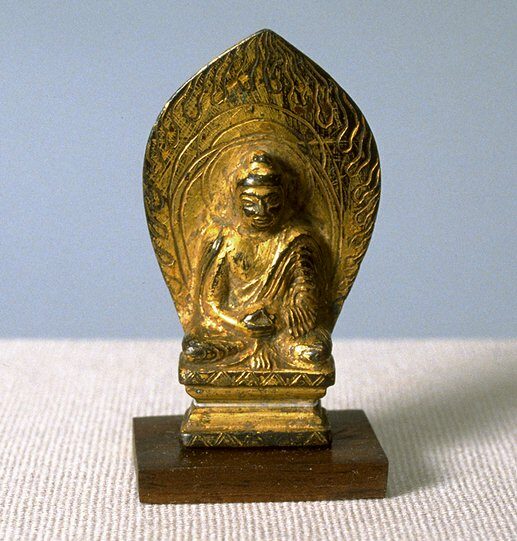Buddha, seated in the padmasana pose, in dhyana mudra, with mandorla
Chinese

Description
March 28 2009
Buddhism reached China more than two thousand years ago, but it was several centuries before it flourished and during this period it remained largely a foreign religion practiced in émigré communities. Both of these sculptures are immediately recognizable as Buddhas yet their styles are very different. The smaller and older Buddha on the right has more foreign elements that have not yet been assimilated into a wholly Chinese style. These Indian and Central Asian characteristics include the pedestal he is seated on, the folds in his robe, and the incised flames in the body halo surrounding him, which represent the fiery radiance he emanates. The larger Buddha on the right illustrates a later style, that of China’s cosmopolitan Tang Dynasty. It has a fuller figure, artfully draped robes, and a plump, rounded face with arched eyebrows. The small size of both images suggests that they were personal objects of devotion.
(Label for UMMA Buddhist Gallery Opening Rotation, March 2009)
Subject Matter:
The Buddha, seated in meditation on a dais which represents the cosmic axis, Mt. Meru, and backed by a mandorla incised with flames.
Physical Description:
Small gilt bronze seated Buddha with Indian and Central Asian characteristics, including the pedestal he is seated on, folds of his robe, and the incised flames in the body halo encompassing him.
Usage Rights:
If you are interested in using an image for a publication, please visit https://umma.umich.edu/request-image/ for more information and to fill out the online Image Rights and Reproductions Request Form.